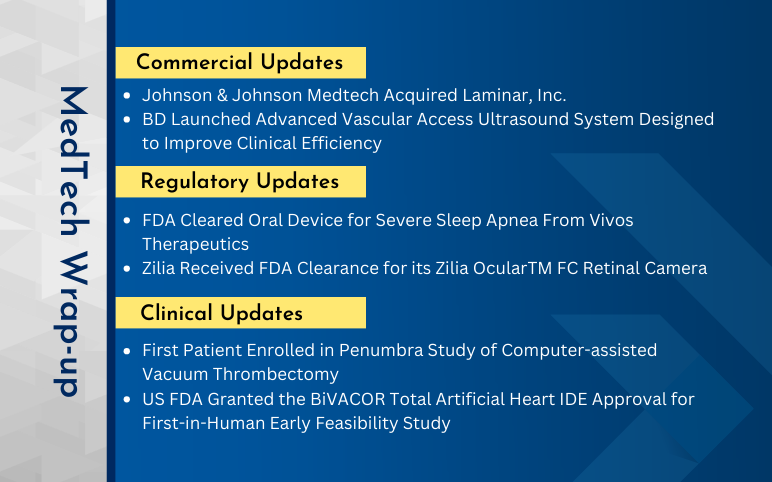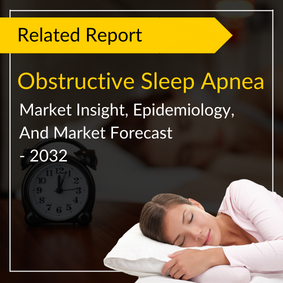Table of Contents
Obstructive Sleep Apnea (OSA) is a common, chronic, sleep-related breathing disorder characterized by periodic narrowing and obstruction of the pharyngeal airway during sleep, leading to either complete or partial obstruction of the airway, resulting in apneas, hypopneas, or both. Obstructive Sleep Apnea causes daytime somnolence, neurocognitive defects, and depression. It is a chronic and permanent condition, but by proper Obstructive Sleep Apnea treatment therapy and medications, this condition can be cured. OSA affects almost every system in the body, resulting in an increased incidence of hypertension, cardiovascular disease, stroke, pulmonary hypertension, cardiac arrhythmias, and altered immune function. It also increases the risk of having an accident, presumably as a result of associated somnolence. Obstructive Sleep Apnea syndrome occurs when the muscles in the back of the throat relax too much to allow normal breathing. These muscles support structures including the back of the roof of the mouth (soft palate), the triangular piece of tissue hanging from the soft palate (uvula), the tonsils, and the tongue.
Obstructive Sleep Apnea occurs when the muscles relax during sleep, causing soft tissue in the back of the throat to collapse and block the upper airway. Current evidence suggests that disturbances in PCRIT play a primary role in Obstructive Sleep Apnea pathogenesis. Daytime sleepiness is among the most common Obstructive Sleep Apnea symptom, but many times patients are asymptomatic. Obstructive Sleep Apnea diagnosis is based on the combined evaluation of clinical manifestations and objective sleep study findings. Cardinal Obstructive Sleep Apnea symptoms include snoring, sleepiness, and significant reports of sleep apnea episodes. Polysomnography represents the gold standard to confirm that clinical suspicion of Obstructive Sleep Apnea syndrome, to assess its severity, and to guide therapeutic choices. Management of Obstructive Sleep Apnea can be done non-surgically or surgically, whereas the treatment modality should focus on the potential contributing factors identified by the history, physical examination, and upper airway imaging. The severity of the patient’s condition must also be taken into consideration in developing a treatment plan. Since obesity is a major Obstructive Sleep Apnea risk factor, a weight loss program can reduce sleep apnea. People with Obstructive Sleep Apnea may also complain of memory problems, morning headaches, mood swings or depression, and a need to urinate frequently at night. It is also a risk factor for COVID-19. People with Obstructive Sleep Apnea have been found to be at higher risk for developing a severe form of COVID-19 and needing hospital treatment than those who do not have Obstructive Sleep Apnea.
Obstructive Sleep Apnea Epidemiology Classification
According to DelveInsight’s estimates, males have higher Obstructive Sleep Apnea prevalence when compared to females. As per DelveInsight, Obstructive Sleep Apnea diagnosed cases in the 7MM countries was estimated to be almost 24 million cases in the year 2021. Out of which, the United States was observed to have the Obstructive Sleep Apnea diagnosed cases which were almost 13 million cases. These cases are estimated to rise upto almost 32 million Obstructive Sleep Apnea diagnosed cases by the year 2030 in the 7MM countries.
Obstructive Sleep Apnea epidemiological segmentation can be done on the basis of Total Obstructive Sleep Apnea Prevalence, Gender-specific Obstructive Sleep Apnea Prevalence, Severity-specific Diagnosed Obstructive Sleep Apnea Prevalence, Diagnosed Obstructive Sleep Apnea Prevalence by Clinical Manifestations, Diagnosed and treatable Obstructive Sleep Apnea cases. As per an analysis by DelveInsight, Obstructive Sleep Apnea is more prevalent in the age group of 65 and above in the US.
Obstructive Sleep Apnea Market
In recent years, an increase in the prevalence of disease, and the expected launch of emerging therapies will boost the Obstructive Sleep Apnea market in the forecast period. According to DelveInsight, the Obstructive Sleep Apnea market size in the 7MM countries was estimated to be approximately USD 245 million in the year 2021. It is also anticipated that the market shall rise to almost USD 1500 million by the year 2030.
Many key pharmaceuticals that are proactively involved in producing Obstructive Sleep Apnea pipeline drugs in the coming years include names such as Teva Pharmaceuticals, Jazz Pharmaceuticals, Idorsia Pharmaceuticals, Bayer, Apnimed, Therapix Biosciences, Eisai, Takeda, Merck & Co, Taisho Pharmaceutical Co., Ltd., Janssen Pharmaceuticals, RespireRx Pharmaceuticals, Cortex Pharmaceuticals, Michael James Enterprises, whose key Obstructive Sleep Apnea treatment therapies are expected to be launched in the coming years and can also serve as a major booster for Obstructive Sleep Apnea treatment market.

Current Obstructive Sleep Apnea Treatment Market
An increase in Obstructive Sleep Apnea prevalence due to various factors like increasing congestive heart failures, high blood pressure, type 2 diabetes, and Parkinson’s disease causing OSA and the expected launch of potential new therapies involving novel mechanisms are anticipated to fuel the Obstructive Sleep Apnea market in the coming years. Mild Obstructive Sleep Apnea treatment usually involves conservative treatments like loss of weight. Pharmacologic therapy is rarely recommended as a main Obstructive Sleep Apnea treatment option.
Obstructive Sleep Apnea treatment therapy includes acetazolamide, medroxyprogesterone, fluoxetine, and protriptyline, although these drugs are not mainly advised. In addition to that, several mechanical therapies such as Positive Airway Pressure (PAP) therapy is the preferred initial Obstructive Sleep Apnea treatment. With PAP therapy, patients wear a mask over their nose and/or mouth. There are several styles, and types of positive airway pressure devices depending on specific needs of patients. Styles and types includes:
- CPAP (Continuous Positive Airway Pressure)
- Bi-Level PAP
- Auto CPAP or Auto Bi-Level PAP
- Adaptive Servo-Ventilation (ASV)
Continuous Positive Airway Pressure (“CPAP”), the most common Obstructive Sleep Apnea treatment available. Although it is cumbersome and difficult for many patients to tolerate. The true benefits of CPAP are seen with complete adherence to patients’ treatment programs.
Obstructive Sleep Apnea surgical procedures may help people who snore. Among the many types of surgeries done are outpatient procedures. Surgery is for people who have excessive or malformed tissue obstructing airflow through the nose or throat, such as a deviated nasal septum, markedly enlarged tonsils or small lower jaw with an overbite that causes the throat to be abnormally narrow. Types of surgery includes: somnoplasty, tonsillectomy, mandibular/maxillary advancement, surgery, nasal surgery, etc.
FDA approved Provigil (modafinil) as an Obstructive Sleep Apnea medication for individuals who have persistent daytime sleepiness despite using CPAP. The recommended dosage of Provigil for patients with narcolepsy or OSA is 200 mg taken orally once a day as a single dose in the morning. Another FDA approved drug for Obstructive Sleep Apnea is Sunosi (solriamfetol). It is a dopamine and norepinephrine reuptake inhibitor (DNRI) indicated for the treatment of excessive daytime sleepiness associated with narcolepsy or Obstructive Sleep Apnea in adult patients. Sunosi is not indicated to treat the underlying causes of airway obstruction in Obstructive Sleep Apnea. It is important that the underlying airway obstruction is treated with a Continuous Positive Airway Pressure (CPAP) machine or other devices prescribed by a doctor during treatment with Sunosi for excessive daytime sleepiness in Obstructive Sleep Apnea.
Emerging Drugs in Obstructive Sleep Apnea Treatment Pipeline
A number of Obstructive Sleep Apnea companies across the globe are diligently working toward developing novel treatment therapies with a considerable amount of success in the sleep disorder area over the years. Key OSA players, such as RespireRx Pharmaceuticals, Apnimed’s and others are developing drugs for Obstructive Sleep Apnea treatment. Novel Obstructive Sleep Apnea treatment therapies like Dronabinol, AD109 and others are the most anticipated emerging therapies that are awaiting approval. These emerging therapies are in the mid and late phases of clinical trials.
Dronabinol, is an Obstructive Sleep Apnea treatment therapy being investigated by RespireRx Pharmaceuticals Inc. It is a synthetic form of the cannabis compound tetrahydrocannabinol (THC), and represents the first pharmacologic approach to the tough-to-treat, potentially serious, condition of Obstructive Sleep Apnea. As part of the cannabinoid platform, two Phase II clinical trials have been completed demonstrating the ability of Dronabinol to significantly reduce Obstructive Sleep Apnea symptoms.
Apnimed’s lead product candidate, AD109, targets key Obstructive Sleep Apnea neurological pathways, reducing pathological upper airway closure during sleep. AD109 is a first-in-class, oral pharmaceutical combination dosed once daily at bedtime, designed for Obstructive Sleep Apnea treatment across a broad spectrum of disease severity. AD109 combines a selective norepinephrine reuptake inhibitor (NRI), atomoxetine, with a novel NCE selective antimuscarinic, aroxybutynin. The investigational drug is designed to be safe, effective, and convenient, addressing the key limitations of the current standard of care treatments.
Sulthiame is a lead candidate developed by Desitin Arzneimittel GmbH for Obstructive Sleep Apnea treatment. Currently being investigated in a Phase II clinical trial, it involves 368 participants aged 18 years to 75 years and the trial is estimated to be completed by May 30, 2023.
Way Ahead
Obstructive Sleep Apnea is now a globally occurring disease whose prevalence is increasing day by day as the obesity rate is increasing. There is a need of substantial treatment therapies in the Obstructive Sleep Apnea market. The current predominant Obstructive Sleep Apnea treatment market includes anticonvulsant medications, it is devoid of many potential treatment therapies with a novel mechanism. So, novel drug development is considered to be an ongoing opportunity for patients of this disease group. Technological advancements, the large prevalence making study material available as well as the presence of key players inclined to work in the OSA treatment landscape, are some of the factors that are responsible for extensive growth in the Obstructive Sleep Apnea treatment market.











-Agonist.png)


